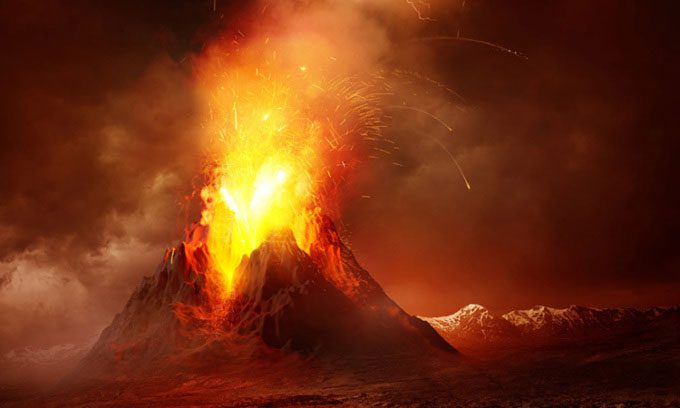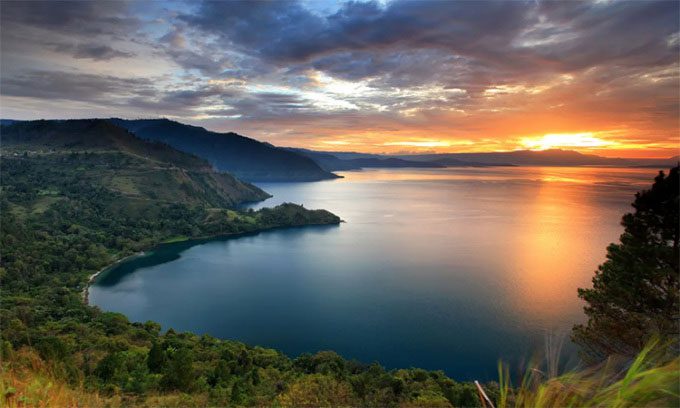The supervolcanic eruption of Toba, which occurred approximately 74,000 years ago, is considered one of the most catastrophic events in Earth’s geological history.
There is a hypothesis suggesting that the population on Earth may have dwindled to just a few thousand individuals after a violent supervolcanic eruption on the island of Sumatra, Indonesia. This led to a brief period in human history where our species faced the threat of extinction.

Illustration of a volcanic eruption. (Photo: Solarseven)
This hypothesis supports the idea that all of humanity may be much more closely related than previously thought. Proponents refer to this as the Toba Catastrophe Theory.
Geological studies indicate that a supervolcano erupted near Lake Toba, Indonesia, about 74,000 years ago. Meanwhile, modern Homo sapiens evolved around 200,000 years ago, and recorded history only began approximately 6,000 years ago.
Described as the “most powerful eruption in human history”, the Toba volcanic disaster expelled a massive amount of ash and debris into Earth’s atmosphere, shrouding the sky in a thick layer of soot that obscured the Sun.
The scale of this “volcanic winter” remains controversial, but some scientists suggest that volcanic ash may have reduced global temperatures by up to 5 degrees Celsius for several years. In the regions surrounding Toba, temperatures could have dropped by as much as 15 degrees Celsius. More modest estimates indicate a temperature drop of about 1 degree Celsius.
In contrast, modern climate change studies show that even a temperature change of just 0.5 degrees Celsius can have a profound impact on Earth and its living organisms. The natural world could be disrupted, plants may fail to grow, and animal species could face extinction.

A serene view of Lake Toba today. (Photo: Franshendrik Tambunan).
Following the Toba supervolcano eruption, another mysterious event occurred. Evidence suggests that around 70,000 years ago, humanity experienced a “genetic bottleneck”—a sudden and significant decline in global population. According to research by Professor Michael R. Rampino from New York University, there may have been only 3,000 to 10,000 individuals of reproductive age surviving on Earth.
However, many do not support the Toba Catastrophe Theory. In 2013, scientists studying sediment in East Africa, thousands of kilometers from the volcano, argued that there were not many traces of ash and very little evidence of significant temperature changes in that region.
“The eruption certainly caused some short-term impacts, possibly over a few seasons, but it doesn’t seem to have shifted the climate into a new state,” said Christine Lane, a researcher at the School of Archaeology at the University of Oxford and the lead author of the 2013 study.
Despite the many questions surrounding the Toba Catastrophe Theory, the reasons for the apparent decline in the global population during this period remain a mystery. Regardless of the cause, humanity’s recovery has been remarkably strong. Genetic studies indicate that the population began to explode around 50,000 years ago. There is considerable evidence suggesting that humans expanded across the Eurasian continent and rapidly developed technology.
Over the past 40,000 years, humanity has truly flourished. Advances in technology and artistic creations demonstrate a significant increase in human cognitive abilities during this period, paving the way for the advent of agriculture and civilizations. Today, the world’s population is estimated to be around 8 billion.





















































